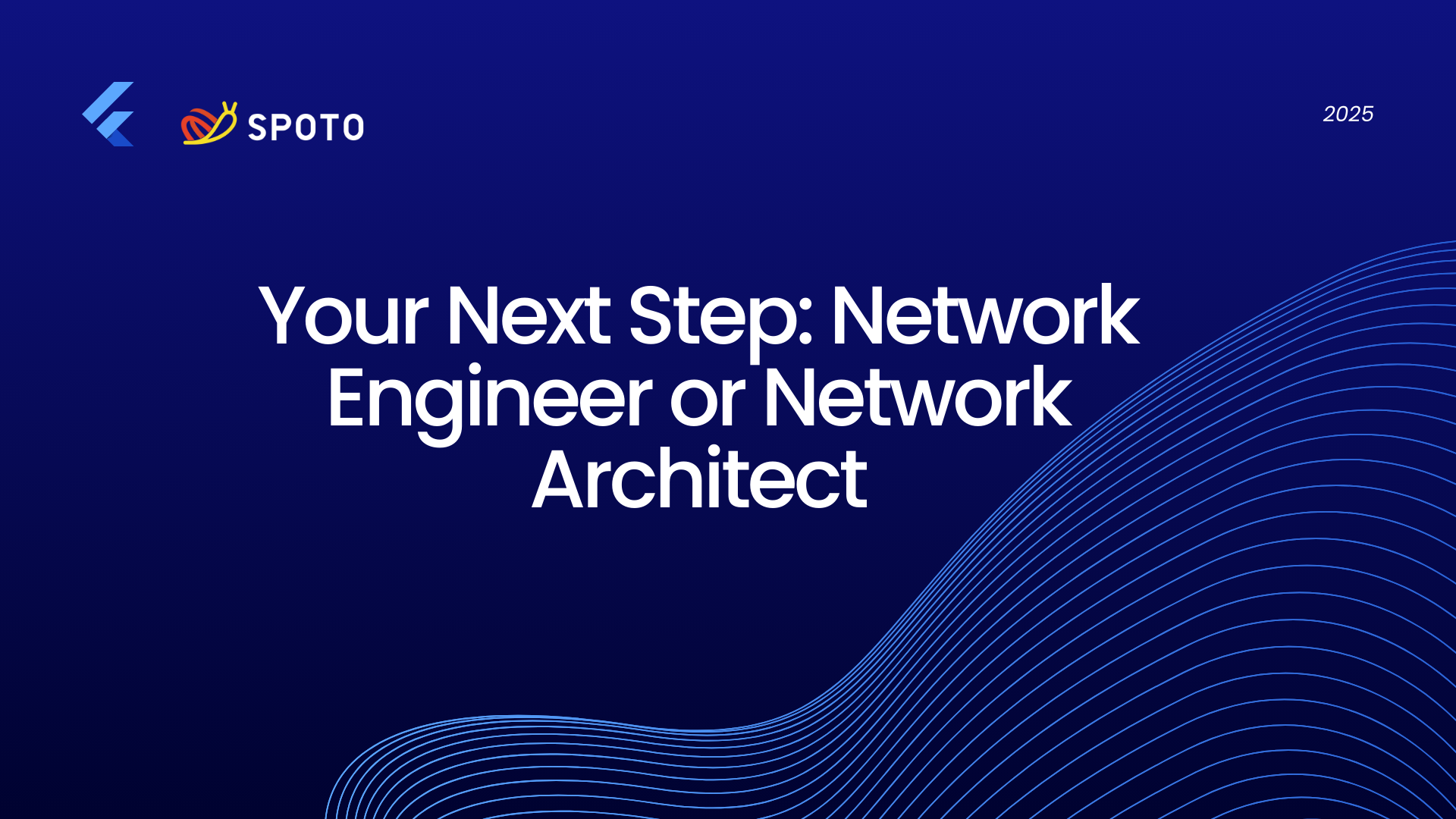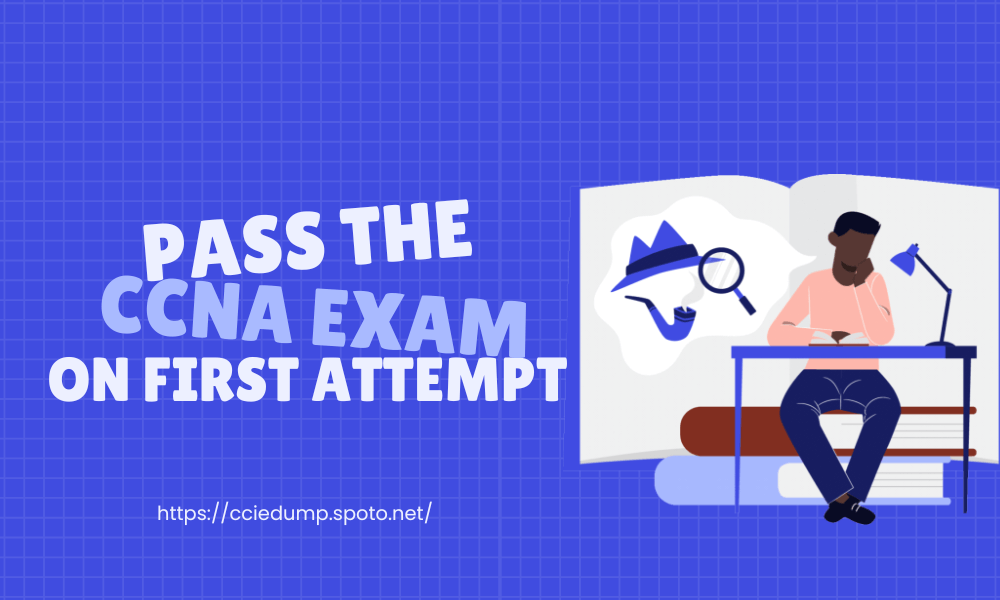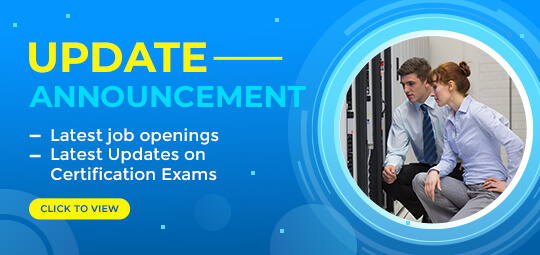TRUSTED BY THE SMARTEST TEAMS IN THE WORLD FOR CERTIFIED CANDIDATES
SPOTO Blogs
Useful learning materials to become certified IT personnel
-
- 1127
- Emma
- 2025-05-27 16:04
-
- 769
- Emma
- 2025-05-19 11:23
-
- 1266
- Emma
- 2025-05-16 12:36
-
- 1150
- circle
- 2025-04-03 11:49
-
- 832
- SPOTO
- 2025-03-25 16:31
-
- 1873
- SPOTO
- 2025-03-25 15:41
-
- 969
- SPOTO
- 2025-03-25 14:06
-
- 1361
- circle
- 2025-03-25 11:44
-
- 1244
- circle
- 2025-03-21 11:47
TRUSTED BY THE SMARTEST TEAMS IN THE WORLD FOR CERTIFIED CANDIDATES
SPOTO Blogs
Useful learning materials to become certified IT personnel
-
- 1127
- Emma
- 2025-05-27 16:04
Table of Contents1. What is a Storage Engineer?2. Why choose to become a Storage Engineer?3. How to Become a Storage Engineer?4. Conclusion Picture this: you're at the forefront of data innovation, designing the backbone of modern digital infrastructure. You handle vast amounts of data, optimize storage solutions, and ensure seamless access to critical information for organizations around the world. If you're passionate about technology, problem-solving, and shaping the future of data management, becoming a Storage Engineer might be your ultimate career move. It's a role that combines technical expertise with strategic thinking, offering a dynamic environment with incredible growth potential. 1. What is a Storage Engineer? A Storage Engineer specializes in designing, implementing, and maintaining data storage solutions that are efficient, secure, and scalable. As data continues to grow exponentially, organizations rely heavily on storage engineers to manage their data infrastructure, ensuring data availability and integrity. Duties & Responsibilities: Designing and deploying storage architecture tailored to organizational needs Configuring and maintaining storage hardware and software solutions Monitoring system performance and troubleshooting issues Implementing data backup, recovery, and disaster recovery plans Ensuring data security and compliance Optimizing storage systems for speed and efficiency Collaborating with IT teams for seamless integration A strong understanding of network and data management principles is essential. Certifications like CCNA can greatly enhance your credibility in network infrastructure, which is often intertwined with storage solutions. The work environment is typically an IT data center or a corporate office, where storage engineers work closely with systems administrators, network engineers, and cybersecurity teams to create a unified data infrastructure. Similar Specializations and Career Paths: Data Center Engineer Network Engineer Cloud Storage Engineer Data Analyst Infrastructure Architect Storage engineers often evolve into roles like Data Architects or Cloud Solutions Architects, guiding organizations in leveraging cloud storage platforms like AWS, Azure, or Google Cloud. 2. Why choose to become a Storage Engineer? Salary Range The demand for skilled storage engineers is on the rise, driven by the ever-increasing data volume across industries. The average salary ranges from $80,000 to $130,000 USD annually, depending on experience, certifications, and location. Entry-level roles start around $60,000, while senior positions with specialized expertise can exceed $150,000. Job Outlook The job outlook is very favorable, with a projected growth rate of 11% from 2024 to 2034, much faster than average for all occupations. As organizations adopt data-centric strategies and move to hybrid cloud environments, the need for proficient storage engineers continues to rise. Other Advantages High Demand: Organizations of all sizes require skilled storage solutions, providing abundant job opportunities. Cutting-Edge Technology: Work with the latest trends like data deduplication, storage virtualization, and cloud storage. Career Growth: Opportunities to advance into management or architecture roles. Impactful Work: Play a vital role in data security, disaster recovery, and operational efficiency. 3. How to Become a Storage Engineer? Step 1: Build a Strong Foundation in Networking and IT Start with foundational knowledge in networking and IT infrastructure. The Cisco CCNA certification is an excellent starting point—covering essential networking concepts such as IP addressing, routing, switching, and network security. These skills are crucial because storage solutions often rely heavily on network architecture. Step 2: Gain Hands-On Experience Work experience is vital. Entry-level roles like IT support technician, network technician, or systems administrator help you understand core IT operations. Focus on learning about storage hardware, SAN (Storage Area Networks), NAS (Network-Attached Storage), and data backup solutions. Step 3: Obtain Relevant Certifications While certifications like CCNA give you a competitive edge, consider additional credentials such as: Cloud storage certifications (AWS, Azure) SPOTO offers comprehensive courses tailored to CCNA and other certifications, providing practical labs and exam preparation that can accelerate your path to becoming a storage engineering professional. Step 4: Specialize and Gain Advanced Skills Focus on mastering specific storage technologies, virtualization, and cloud storage platforms. Developing expertise in these areas makes you indispensable to organizations navigating digital transformation. Step 5: Seek Advanced Roles With experience and certifications, progress into senior storage engineer roles or solution architecture positions. Continuing education, such as advanced certifications or a relevant master's degree, can further boost your prospects. 4. Conclusion A career as a Storage Engineer offers exciting opportunities in a data-driven world. Combining technical expertise with strategic thinking, storage engineers shape an organization's ability to harness data effectively and securely. The demand for these professionals is rising, with competitive salaries and vast growth potential. To embark on this rewarding journey, start with foundational certifications like CCNA, upgrade your skills with hands-on experience, and leverage specialized courses from SPOTO to prepare for your certifications and real-world challenges. As data continues to grow exponentially, the need for skilled storage engineers will only intensify—making now the perfect time to join this thriving field. Are you ready to future-proof your career? Dive into training, earn your certifications, and become a key player in the world of data storage! -
- 769
- Emma
- 2025-05-19 11:23
Table of Contents2. How to Become a Communications Systems Engineer?3. The Details4. Conclusion In today's hyper-connected world, where seamless communication is the lifeblood of every industry, the role of a Communications Systems Engineer has emerged as not just crucial but transformative. This isn't merely a job. It's a gateway to a dynamic and rewarding career that shapes the way we interact, work, and live. 1. What is a Communications Systems Engineer? A Communications Systems Engineer is a technological professional who designs, develops, tests, and maintains systems that enable the transmission of information across vast distances. They're the architects behind the intricate web of networks that support everything from our daily smartphone calls to global satellite communications. Unlike traditional engineers, modern Communications Systems Engineers are at the intersection of multiple disciplines. They blend electrical engineering principles with computer science, signal processing, and network protocols. For example, they might leverage artificial intelligence algorithms to optimize data flow in 5G networks or use blockchain technology to secure satellite communications. Their work doesn't stop at the technical aspect; they also collaborate with cross-functional teams, translating complex technical jargon into actionable strategies for businesses and consumers alike. 2. How to Become a Communications Systems Engineer? Build a Strong Educational Foundation Start with a relevant degree such as Electrical Engineering, Telecommunications, Computer Engineering, or a related field. Focus on courses like signal processing, network protocols, semiconductor devices, and digital communications. Gain Technical Skills and Certifications Develop skills in network design, satellite communications, and cybersecurity. Certifications like Cisco's CCNA or Cisco Certified Network Professional (CCNP) or vendor-specific ones can boost your credibility. Get Practical Experience Look for internships or entry-level roles in telecommunications companies or network providers. Hands-on experience with maintaining, designing, or troubleshooting communication systems will be invaluable. Develop Problem-Solving Abilities Communications engineers often need to troubleshoot complex systems. Strengthen your analytical thinking, software skills (like MATLAB or Python), and familiarity with simulation tools. Specialize and Stay Updated Choose a specialization—like wireless, fiber optics, satellite, or 5G networks—and stay informed about industry advancements. Attend industry conferences and workshops, and join professional networks. Advance Your Career As you gain experience, you can move into senior engineering roles or project management. Continuous learning and possibly pursuing a master's degree or certifications like PMP can open more doors. 3. The Details Communications Systems Engineer Salary Increase Salaries for Communications Systems Engineers tend to rise with experience, specialization, and geographic location. Entry-level positions might start around $60,000–$80,000, while experienced engineers can earn $100,000–$150,000 or more annually. Certifications, advanced degrees, and leadership roles further boost earning potential. Moreover, as companies increasingly rely on advanced communication systems for their operations, they're willing to invest heavily in top talent. This means that engineers who stay updated with the latest technologies and can demonstrate their value through successful projects often enjoy regular salary increments, bonuses, and attractive benefits packages. Communications Systems Engineer Job Outlook The job outlook for Communications Systems Engineers remains strong and promising. As demand for advanced communication technologies—like 5G, satellite internet, IoT, and cybersecurity—continues to grow, so does the need for skilled engineers in this field. Key points on the outlook: Positive growth: BLS projects steady employment growth for electrical and electronics engineers, including communications specialists. Industry expansion: The rollout of 5G, expansion of satellite networks, and ongoing advancements in mobile and wireless tech drive ongoing demand. Innovation-driven: Rapid technological changes mean continuous learning and specialization opportunities are vital, creating a dynamic job market. Geographical factors: Tech hubs and regions with high telecommunications activity tend to have more opportunities. Related Jobs: Network Engineer Systems Integration Engineer Wireless Communications Engineer Network Security Specialist Satellite Communications Engineer Cloud Communications Engineer 4. Conclusion In conclusion, a career as a Communications Systems Engineer is a ticket to a world of endless possibilities. It offers a unique blend of technical challenge, financial reward, and the opportunity to make a real impact on society. Whether you're a recent graduate looking to embark on an exciting professional journey or a seasoned professional seeking a new direction, the field of communications systems engineering welcomes you with open arms. With the right education, skills, and a passion for innovation, you can be at the forefront of shaping the future of global communication. So, take the leap and embrace this essential path to career success! -
- 1266
- Emma
- 2025-05-16 12:36
Table of Contents1. Introduction2. What is a Network Engineer?3. How to Become a Network Engineer vs. a Network Architect?4. The Details5. Conclusion: Choosing Your Networking Career Path 1. Introduction In today's digitally driven world, networking professionals are the backbone of modern enterprises. But when considering a career in networking, two prominent roles stand out: Network Engineer and network architect. While both are crucial to maintaining and optimizing network infrastructures, they differ significantly in responsibilities, required skills, and career trajectories. If you're torn between these two paths, this guide will break down the key differences—from job duties and salaries to certifications and long-term growth—helping you decide which role aligns best with your ambitions. 2. What is a Network Engineer? A Network Engineer is the hands-on technician responsible for implementing, maintaining, and troubleshooting network systems. They ensure that routers, switches, firewalls, and other network components operate smoothly. Key Responsibilities: Configuring and installing network hardware/software Monitoring network performance and troubleshooting outages Ensuring security compliance (firewalls, VPNs, intrusion detection) Collaborating with IT teams to optimize connectivity Unlike a Network Architect, who designs the blueprint of the network, a Network Engineer executes and maintains that vision. 3. How to Become a Network Engineer vs. a Network Architect? Path to Becoming a Network Engineer Education: A bachelor's degree in computer science, IT, or a related field is common. Entry-Level Roles: Start as a Network Administrator or IT Support Specialist. Certifications: CCNA (Cisco Certified Network Associate)—fundamental networking skills CompTIA Network+ Broad vendor-neutral knowledge Path to Becoming a Network Architect Experience: 5+ years as a Network Engineer or similar role. Advanced Certifications: CCIE (Cisco Certified Internetwork Expert)—Gold standard for architects Aruba HPE7-A03 (Campus Access Architect)—For Aruba-based solutions AWS/Azure Networking Certifications—Cloud infrastructure design Key Difference: Network Engineers focus on implementation and maintenance. Network Architects focus on designing scalable, future-proof networks. 4. The Details Network Engineer vs. Network Architect Salary According to data from the U.S. Bureau of Labor Statistics, the earnings landscape for professionals in the networking field exhibits notable disparities. Network engineers, who play a pivotal role in designing, implementing, and maintaining computer networks, typically earn a median annual wage of $81,000. Their responsibilities often encompass tasks like configuring routers and switches, troubleshooting network issues, and ensuring network security. In contrast, network architects, who occupy a more senior and strategic position, enjoy a significantly higher median annual income of $121,000. These experts are tasked with envisioning and planning complex network systems, making crucial decisions regarding network infrastructure upgrades, and collaborating with various stakeholders to align network designs with business objectives. Network Engineer Job Outlook The demand for network engineers remains consistently strong across industries, driven by ongoing digital transformation and the increasing complexity of modern IT infrastructure. This role is particularly vital in the expanding realms of cloud computing and cybersecurity, where professionals are tasked with designing, deploying, and maintaining secure network architectures that support hybrid cloud environments, remote work frameworks, and data protection protocols. As organizations prioritize resilience and scalability, network engineers with skills in cloud platforms (e.g., AWS, Azure), software-defined networking (SDN), and threat mitigation are increasingly sought after, ensuring stable career opportunities. For network architects, the landscape is marked by rapid growth, fueled by advancements in 5G technology, the proliferation of IoT devices, and the widespread adoption of hybrid cloud models. These trends demand sophisticated, future-proof network designs that can handle exponential data growth, low-latency requirements, and seamless integration between on-premises and cloud environments. Architects must possess deep technical expertise in areas like network automation, edge computing, and advanced routing/switching, coupled with leadership skills to oversee cross-functional teams, align network strategies with business goals, and drive innovation. While this role offers significantly higher earning potential than network engineering—often reflecting its strategic and specialized nature—it requires years of hands-on experience, advanced certifications (e.g., CCIE, Aruba ACE), and the ability to navigate evolving industry standards. Related Jobs: Cloud Network Engineer Security Architect DevOps Engineer 5. Conclusion: Choosing Your Networking Career Path The choice between becoming a network engineer or network architect hinges on your professional aspirations and strengths. Network engineers thrive in hands-on technical roles, maintaining and optimizing network systems - ideal for those who enjoy troubleshooting and want quicker entry into the field. With foundational certifications like CCNA, engineers can specialize in emerging areas like cloud networking or security while building experience for future advancement. Network architects, commanding higher salaries, focus on strategic design and large-scale infrastructure planning. This path suits professionals who excel at big-picture thinking and want to shape enterprise network strategies, though it typically requires years of engineering experience plus advanced certifications like CCIE or Aruba HPE7-A03. Your Next Move: Engineers: Get CCNA or CompTIA Network+ certified. Architects: Pursue CCIE or Aruba HPE7-A03 and gain design experience. Which path excites you more? Click to learn more! -
- 1150
- circle
- 2025-04-03 11:49
If you're looking to advance your career in networking, choosing between Cisco Certified Network Associate (CCNA) and Cisco Certified Network Professional (CCNP) can be a challenging decision. Both certifications offer immense value, but which one aligns best with your career aspirations? Whether you're a beginner stepping into the networking world or an experienced professional looking to specialize, this guide will help you determine the right path for your goals. Understanding CCNA and CCNP What is CCNA? The CCNA (Cisco Certified Network Associate) is an entry-level certification that provides foundational knowledge of networking. It covers essential topics such as: Network fundamentals IP addressing and subnetting Routing and switching concepts Network security basics Automation and programmability CCNA is ideal for those who are new to networking or looking to establish a strong technical foundation. It's a great stepping stone toward more advanced certifications like CCNP. The certification validates your ability to install, configure, operate, and troubleshoot small to medium-sized networks. This makes it a strong choice for individuals starting their journey in IT infrastructure and networking. What is CCNP? The CCNP (Cisco Certified Network Professional) is an advanced certification designed for professionals who want to specialize in networking. It offers multiple concentration tracks, including: CCNP Enterprise – Focuses on routing, switching, SD-WAN, and network automation. CCNP Security – Covers firewall technologies, VPNs, and cybersecurity principles. CCNP Data Center – Deals with data center technologies, virtualization, and automation. CCNP Collaboration – Emphasizes voice, video, and unified communications. CCNP Service Provider – Focuses on carrier-grade networking technologies. Unlike CCNA, CCNP requires a deeper understanding of networking and the ability to configure, troubleshoot, and optimize network environments. CCNP is designed for professionals who want to build expertise in specialized areas of networking, allowing them to handle more complex tasks and take on greater responsibilities within an organization. Who Should Choose CCNA? Best for Beginners If you have little to no experience in networking, CCNA is the perfect starting point. It introduces you to key networking concepts without overwhelming complexity. CCNA is suitable for students, recent graduates, and professionals switching from other industries to IT. It provides a structured learning path and a clear foundation to progress in networking. Ideal for Entry-Level Roles CCNA certification is well-suited for job roles such as: Network Technician Help Desk Engineer Technical Support Specialist Entry-Level Network Administrator Employers often look for CCNA-certified individuals when hiring for these positions because the certification demonstrates practical knowledge of networking concepts, device configuration, and troubleshooting skills. Great for IT Career Switchers If you're transitioning into IT from another field, CCNA provides the fundamental knowledge required to enter the networking industry. Many professionals from software development, cybersecurity, or other technical fields obtain CCNA to broaden their skill set and increase job opportunities. Who Should Choose CCNP? Best for Experienced Professionals If you already have networking experience or hold a CCNA certification, CCNP is the logical next step. It allows you to specialize in specific areas and enhances your technical expertise. CCNP is suitable for individuals who are already working in networking and want to advance their careers by gaining deeper knowledge of enterprise-level networking solutions. Ideal for Advanced Job Roles CCNP certification is often required for mid-to-senior-level networking positions such as: Network Engineer Systems Administrator Network Security Specialist IT Manager These roles demand a higher level of networking expertise, including the ability to design and implement large-scale network solutions. A CCNP certification gives you an edge over candidates with only entry-level certifications. Great for Career Growth and Higher Salaries CCNP-certified professionals often earn higher salaries and have more opportunities for career advancement compared to CCNA holders. The ability to specialize in areas such as security, enterprise networking, or collaboration makes CCNP a valuable credential for IT professionals seeking leadership roles in networking. Which Certification is Right for You? Choose CCNA if: You are new to networking and need a solid foundation. You are seeking entry-level IT jobs. You want a cost-effective way to start your networking career. You want to build a strong understanding of networking basics before specializing. Choose CCNP if: You have networking experience and want to specialize. You're aiming for higher-paying roles. You want to gain advanced networking skills and work on enterprise-level projects. You're interested in specializing in security, data center, or collaboration networking. Cost and Exam Requirements One major factor when choosing between CCNA and CCNP is the exam difficulty level. The CCNA exam (200-301) consists of a single exam that covers various networking topics. In contrast, CCNP certification requires passing two exams: a core exam (such as ENCOR 350-401 for CCNP Enterprise) and a concentration exam based on your chosen specialization. The difficulty level of CCNP is significantly higher than that of CCNA because it requires a deeper understanding of networking concepts and hands-on experience. Many candidates gain at least two to three years of networking experience before attempting CCNP. Conclusion Both CCNA and CCNP are valuable certifications, but the right choice depends on your experience level and career goals. If you're just starting, CCNA is the best option. If you're ready to take on more advanced networking roles, CCNP is the way to go. No matter which certification you choose, investing in Cisco certifications will open doors to exciting career opportunities. Take the next step today and start building your future in networking! -
- 832
- SPOTO
- 2025-03-25 16:31
Table of ContentsMy CCNA JourneyKey Study ResourcesHands-On PracticePractice TestsFinal TipsConclusion Passing the Cisco Certified Network Associate (CCNA) exam is a critical step for anyone pursuing a career in networking. As someone who successfully passed the CCNA exam on my first attempt, I'm sharing my proven study methods to help you achieve the same success. Whether you're just starting or looking to refine your preparation, this guide will provide actionable insights to streamline your journey. My CCNA Journey I took the CCNA exam in May 2023 and passed on my first try. My preparation included three years of Cisco Networking Academy courses in high school, where I gained a solid foundation in networking fundamentals. Additionally, I placed first in the nation for Network Administration at BPA, which further honed my skills. My experience taught me that a combination of structured learning, hands-on practice, and strategic testing is the key to success. Key Study Resources 1. Cisco Networking Academy The Cisco Networking Academy was my primary resource. It offers a comprehensive curriculum, including courses like Intro to Networking, Switching, Routing, and Wireless Essentials, and Enterprise Networking. These courses are available in both instructor-led and self-paced formats, making them flexible for different learning styles. While the program can be expensive, it's worth the investment if your employer or school covers the cost. 2. SPOTO CCNA Study Materials For practice exams, I relied on SPOTO, a paid resource that provides realistic test questions. The questions are often more challenging than the actual CCNA exam, which helped me feel well-prepared. The detailed explanations for each answer were invaluable for understanding complex topics. 3. Packet Tracer Packet Tracer, Cisco's free network simulation tool, was essential for hands-on practice. It allowed me to configure virtual networks and troubleshoot issues, which is critical for the exam's lab components. You can access Packet Tracer for free with a Cisco Skills for All account. 4. "31 Days Before CCNA" Book I also used the "31 Days Before CCNA" book, which I borrowed from my local library. While I didn't follow the 31-day schedule, the book served as a concise review of key topics, especially for refreshing my knowledge after completing the Cisco courses. Hands-On Practice Hands-on experience is crucial for the CCNA exam, which includes lab simulations where you configure and troubleshoot network devices. Here are the tools I used: Packet Tracer: Ideal for beginners and intermediate learners. It's user-friendly and provides a wide range of networking scenarios to practice. GNS3: An open-source tool for advanced simulations. It allows emulation of complex network environments and is powerful for deepening technical expertise. Practice Tests Practice tests are a cornerstone of CCNA preparation. They help you familiarize yourself with the exam format, identify weak areas, and build confidence. SPOTO Exam Materials: SPOTO CCNA questions are designed to mimic the difficulty of the actual exam. The detailed explanations for each answer helped me understand why certain solutions were correct, which reinforced my learning. Free Online Quizzes: I also utilized free online quizzes by searching "CCNA practice questions" on Google. These short, 10-20 question tests were a great way to practice in my free time and reinforce key concepts. SPOTO also offer some free tests for candidates to study. Final Tips Start Early: Dedicate at least 2-3 months to focused preparation. Mix Resources: Combine books, videos, and hands-on labs for a well-rounded approach. Focus on Weak Areas: Use practice tests to identify and improve challenging topics. Join Communities: Engage with forums or Discord groups for support and tips. Conclusion Passing the CCNA exam requires a combination of theoretical knowledge, hands-on practice, and strategic preparation. By leveraging resources like the Cisco Networking Academy, Packet Tracer, and SPOTO study materials, you can confidently approach the exam and achieve certification on your first attempt. Downloadable Resources: https://cciedump.spoto.net/cisco-ebook-download -
- 1873
- SPOTO
- 2025-03-25 15:41
Table of ContentsWhy the CCNA Remains RelevantComparing the CCNA to Other CertificationsCareer Benefits of the CCNAPreparing for the CCNAConclusion The Cisco Certified Network Associate (CCNA) certification has long been a cornerstone for IT professionals aiming to enter the networking domain. Whether you're transitioning from a help desk role, pursuing a career in cyber security, or aiming to become a network engineer, the CCNA is often the first step. But with evolving technologies and new certifications emerging, is the CCNA still worth the investment in 2025? Why the CCNA Remains Relevant 1. Industry Recognition The CCNA is widely regarded as a benchmark for networking knowledge. Employers often view it as a validation of a candidate's skills, making it a key requirement for junior networking roles. 2. Comprehensive Curriculum The CCNA syllabus covers a broad range of topics, including routing, switching, wireless technologies, and automation. This comprehensive approach ensures that candidates gain a solid foundation in networking fundamentals. 3. Hands-On Experience Unlike vendor-neutral certifications like CompTIA Network+, the CCNA emphasizes hands-on labs and simulations. Using tools like Cisco Packet Tracer, candidates can practice configuring routers, switches, and troubleshooting network issues. 4. Vendor-Specific Expertise While the CCNA is heavily focused on Cisco's iOS and proprietary technologies, this vendor-specific knowledge is highly sought after in the industry. Comparing the CCNA to Other Certifications CCNA vs. CompTIA Network+ CCNA: Vendor-specific, hands-on labs, deeper focus on Cisco technologies. CompTIA Network+: Vendor-neutral, broader but less in-depth, minimal hands-on experience. CCNA vs. Juniper or Aruba Certifications While certifications from vendors like Juniper and Aruba are valuable, they lack the widespread recognition and online support that the CCNA enjoys. Career Benefits of the CCNA 1. Entry-Level Networking Roles The CCNA can help you secure roles such as Network Engineer or Network Administrator, with salaries ranging from $60,000 to $85,000 in markets like the US and Australia. 2. Pathway to Cybersecurity Understanding networking is critical for roles in cybersecurity, making the CCNA a valuable stepping stone. 3. Career Advancement The CCNA is often a prerequisite for advanced certifications like the Cisco Certified Network Professional (CCNP). Preparing for the CCNA 1. Study Resources Jeremy's IT Lab (YouTube): Free, high-quality CCNA tutorials. Official Certification Guide by Cisco: A must-read book for exam preparation. SPOTO CCNA Study Materials: These are very useful for preparing and passing the exam. 2. Practice Tests Invest in practice exams like SPOTO to familiarize yourself with the test format and identify weak areas. 3. Hands-On Labs Use Cisco Packet Tracer to build and troubleshoot virtual networks. Hands-on practice is essential for both the exam and real-world applications. Conclusion In 2025, the CCNA certification remains a worthwhile investment for anyone looking to enter or advance in the networking field. Its industry recognition, comprehensive curriculum, and emphasis on hands-on experience make it a valuable credential. Downloadable Resources: https://cciedump.spoto.net/cisco-ebook-download -
- 969
- SPOTO
- 2025-03-25 14:06
Table of Contents1. Why CCNA Matters in 20252. Exam Blueprint AnalysisTop Tips to Pass the CCNA ExamExam Experience: What to ExpectConclusion The Cisco Certified Network Associate (CCNA) certification is one of the most sought-after credentials in the IT and networking industry. With over 2,000 job opportunities in the European Union, 1,000 in the US, and 1,000 in India, earning this certification can significantly boost your career prospects. In this blog, we'll explore top tips to help you pass the CCNA exam on your first attempt, along with insights into the exam structure and difficulty level. 1. Why CCNA Matters in 2025 The CCNA certification validates your ability to install, operate, and troubleshoot medium-sized routed and switched networks. It's a stepping stone to advanced certifications like CCNP and CCIE, and it's highly valued by employers worldwide. According to the IT Skills and Salary Report by Skillsoft, CCNA ranks alongside AWS and Google Cloud certifications as one of the most desired credentials in the tech industry. 2. Exam Blueprint Analysis The CCNA exam is divided into several key domains, each focusing on essential networking concepts: Network Fundamentals: Covers OSI model, TCP/IP, Ethernet, and wireless technologies. Network Access: Focuses on VLANs, port security, and authentication methods. IP Connectivity: Includes IP addressing, subnetting, and routing protocols like OSPF. IP Services: Covers NAT, DHCP, QoS, and DNS. Security: Focuses on VPNs, ACLs, and device security. Automation and Programmability: Emphasizes APIs, Python, Ansible, and Cisco SDN. Top Tips to Pass the CCNA Exam 1. Master the Fundamentals A solid understanding of networking basics is crucial. Focus on: OSI Model: Understand the seven layers and their functions. TCP/IP Protocol Suite: Learn IP, TCP, UDP, and ICMP protocols. Subnetting: Practice calculating subnets and IP address ranges. Routing Protocols: Familiarize yourself with OSPF and its operations. 2. Hands-On Practice Practical experience is key to mastering CCNA concepts. Use tools like Cisco Packet Tracer or real hardware to: Configure routers and switches. Troubleshoot network issues. Implement security measures like ACLs and VPNs. 3. Diversify Your Learning Resources Use a mix of study materials to deepen your understanding: Online Courses: Platforms like Udemy or SPOTO offer comprehensive CCNA courses. Books: Use official Cisco guides and supplementary materials. Note: You can also download these Cisco study materials from SPOTO website. 4. Take Practice Tests Practice tests are essential for gauging your readiness. Use platforms like SPOTO to: Simulate exam conditions. Identify weak areas. Familiarize yourself with question formats. Exam Experience: What to Expect Difficulty Level The exam is fair and balanced, with questions evenly distributed across domains. If you've prepared thoroughly, you'll find it manageable. Lab Component The labs validate your practical skills and are relatively straightforward if you've practiced extensively. Expect around 100 questions, including 4 performance-based labs. Conclusion Passing the CCNA exam requires a combination of theoretical knowledge, hands-on practice, and strategic preparation. By mastering the fundamentals and utilizing diverse resources, you can confidently earn your certification. Downloadable Resources: https://cciedump.spoto.net/cisco-ebook-download -
- 1361
- circle
- 2025-03-25 11:44
As we embark on the journey into 2025, the world of technology continues to evolve rapidly, with networking playing a pivotal role in connecting everything from personal devices to global enterprises. Among the most esteemed certifications in the networking industry, Cisco's CCNA (Cisco Certified Network Associate) stands out as a gateway to a rewarding career. If you're planning to study for the CCNA exam in 2025, you're making a smart move toward a future filled with exciting opportunities. Here's why and how you should prepare for this esteemed certification. Why Pursue CCNA in 2025? Industry Demand: The demand for skilled network engineers is at an all-time high. With the proliferation of IoT devices, cloud computing, and advanced network architectures, businesses are eager to hire professionals who can design, implement, and troubleshoot complex networks. CCNA-certified professionals are in high demand and command competitive salaries. Future-Proof Skills: The CCNA curriculum is continually updated to reflect the latest trends and technologies in networking. In 2025, the CCNA will cover topics such as automation, security, and emerging wireless technologies, ensuring that you possess the skills needed to thrive in the modern networking environment. Career Advancement: Whether you're just starting your career or looking to advance, CCNA can open doors to new job roles and promotions. It demonstrates your commitment to excellence and serves as a foundation for more advanced certifications like CCNP and CCIE. Global Recognition: Cisco certifications are recognized worldwide. Achieving CCNA status can open opportunities for international work experiences, collaborations, and networking with professionals from diverse backgrounds. How to Prepare for CCNA in 2025? Understand the Exam Format: Familiarize yourself with the exam format, including the number of questions, duration, and types of questions (multiple-choice, drag-and-drop, simulations, etc.). Cisco often updates its exam structures, so ensure you're studying based on the latest information available. Choose the Right Study Materials: Invest in high-quality study materials. Cisco's official curriculum, including books, practice exams, and lab guides, is a great starting point. Additionally, consider online resources such as video tutorials, forums, and practice platforms that can offer real-world scenarios and hands-on experience. Hands-On Experience: Theory alone won't suffice; practical experience is crucial. Set up a home lab with routers, switches, and other networking equipment, or utilize cloud-based labs like Packet Tracer and GNS3. This will allow you to apply theoretical knowledge in practical scenarios, enhancing your understanding and retention. Join Study Groups and Forums: Engage with other CCNA aspirants through study groups, forums, and online communities. Sharing knowledge, solving problems, and discussing exam strategies can significantly enhance your preparation. Plus, it's a great way to stay motivated and accountable. Create a Study Plan: A well-structured study plan is vital for success. Break down the vast CCNA syllabus into manageable chunks, allocate dedicated study hours, and set realistic milestones. Regularly review and adjust your plan based on your progress and understanding. Practice, Practice, Practice: Take practice exams regularly to assess your preparation. This will help you identify areas of strength and weakness, allowing you to focus your studies more effectively. Cisco Learning Network and third-party platforms offer a plethora of practice exams and quizzes. Stay Updated: Networking technologies evolve rapidly. Keep abreast of the latest developments, updates to the CCNA exam, and new study resources. Following Cisco blogs, podcasts, and industry news can provide insights and keep your preparation relevant. Tips for a Successful Exam Day Rest Well: Ensure you're well-rested and mentally prepared for the exam day. A good night's sleep before the exam can make a significant difference. Review Key Concepts: Spend some time reviewing key concepts and formulas on the day of the exam. Eat Healthy: A balanced meal can help maintain your energy levels and focus during the exam. Stay Calm: Stay calm and composed. Remember, preparation is the key to confidence. Take deep breaths and manage your time wisely during the exam. Conclusion Studying for Cisco's CCNA in 2025 is not just about acquiring a certification; it's about equipping yourself with the skills and knowledge to thrive in a dynamic and exciting industry. By following a structured preparation plan, engaging with the right resources, and maintaining a positive mindset, you can unlock your potential and pave the way for a successful networking career. Embrace the challenge, stay committed, and watch your dreams unfold in the thrilling world of networking. Happy studying! -
- 1244
- circle
- 2025-03-21 11:47
In the fast-paced world of information technology, breaking into the industry can be challenging, especially for those with limited experience. For one man I knew, this was no exception. Starting at the bottom, he spent just over a year working in a help desk role, feeling stuck and eager for a way to advance his career. That's when he decided to take a leap and pursue the Cisco Certified Network Associate (CCNA) certification. His journey, filled with hard work and determination, paid off in unexpected ways, transforming his career trajectory in a remarkable way. The Decision to Pursue CCNA After a year of working in a help desk position, it became increasingly clear that he needed to take the next step to progress in his IT career. With no other IT experience to speak of, he knew he had to start somewhere, and the CCNA certification seemed like the perfect fit. Networking was an area he was passionate about, and obtaining this certification would provide him with the skills and knowledge necessary to break into more traditional networking roles. He dedicated himself to studying for the CCNA, putting in long hours and focusing intently on the material. With a well-structured study plan and a commitment to excellence, he was able to knock out the certification in just 3.5 months. This was a significant accomplishment, but it was just the beginning of his journey. The Impact of CCNA Certification While it's impossible to say that the CCNA certification alone was the sole factor that led to his career advancement, there's no denying that it played a crucial role. The knowledge and skills he gained while studying for the certification were invaluable, and they provided him with a solid foundation for the technical interview that ultimately landed him a new job. Just one month after achieving his CCNA certification, he landed a job that would eventually lead him to his current position. In this role, he does a mix of operations and engineering work on several hundred Nokia routers and switches. He's progressing towards a Nokia certification to specialize further in service-provider networks, a testament to his dedication to continuous learning and growth. But the CCNA's impact wasn't just about landing a new job. The certification also provided him with a sense of accomplishment and confidence. He knew that he had put in the hard work and dedication to earn this credential, and that knowledge gave him the confidence to pursue new opportunities and challenges. The Role of Other Certifications and Education While the CCNA was a significant step in his career advancement, it's worth noting that he had other certifications and educational background that also played a role. He holds a bachelor's degree and the CompTIA trifecta—a combination of three certifications in A+, Network+, and Security+. These certifications, combined with his CCNA, demonstrate a well-rounded skill set and a commitment to ongoing education and professional development. In the IT industry, certifications are often seen as a way to validate skills and knowledge. While they are not the only factor in landing a job or advancing in a career, they can certainly open doors and provide opportunities for growth. For this man, having a combination of certifications and educational background gave him a competitive edge in the job market and helped him stand out to potential employers. The Importance of Continuous Learning The IT industry is constantly evolving, and staying up-to-date with the latest trends and technologies is crucial for career success. He has taken this to heart, demonstrating a commitment to continuous learning and growth throughout his career. In addition to his certifications, he has sought out opportunities for hands-on experience and professional development. He has taken on projects that challenge him and push him out of his comfort zone, and he has sought out mentorship and guidance from more experienced professionals in the industry. This commitment to continuous learning has not only helped him advance in his career but has also made him a more well-rounded and valuable professional. He is confident in his skills and knowledge, and he is always looking for ways to improve and grow. Conclusion In conclusion, obtaining the CCNA certification was a significant step in this man's career advancement. While it's impossible to say that the certification alone was the sole factor that led to his success, there's no denying that it played a crucial role. The knowledge and skills he gained while studying for the certification were instrumental in landing him a new job and providing him with the foundation he needed to progress in his career. His journey serves as an inspiration to others who may be feeling stuck in their current roles or who are looking for ways to break into the IT industry. With dedication, hard work, and a commitment to continuous learning, the possibilities are endless. So, if you're ready to take the next step in your career, consider pursuing a CCNA certification and see where it takes you.














